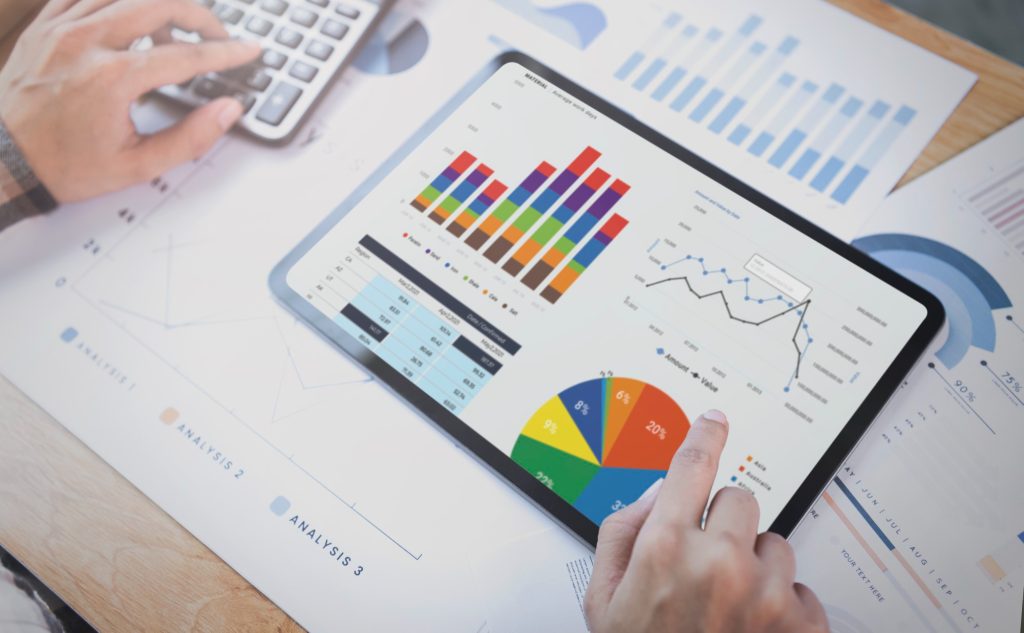
As more restaurants turn to influencer marketing strategies to boost their brand and fill tables, it’s becoming clear that a data-driven approach is the key to standing out. Relying on gut-feelings or hoping for the best won’t cut it. You need to know exactly what’s working, what’s not, and how to make every campaign count. This is where tracking and analyzing data can transform influencer marketing from a risky gamble into a precise, powerful strategy.
In this blog, we’ll dive into how you can use data to take the guesswork out of your influencer marketing efforts. By focusing on the right metrics and tools, you’ll be able to measure success, optimize your campaigns, and ensure every post, video, and collaboration delivers real, measurable growth for your restaurant.
Why Data is Key to Successful Influencer Marketing
Imagine investing time and money into influencer marketing strategies without knowing if it’s actually moving the needle for your restaurant. This is where data steps in as your secret weapon. By using data to track what’s working and what’s not, you can make smarter decisions and get the most out of every campaign.
The Power of Data
Data lets you take control of your influencer marketing. From choosing influencers whose audience aligns with your target market to understanding how well their content is driving traffic, data gives you insights you can act on. Instead of relying on guesswork, you can back up your decisions with real numbers, ensuring your marketing efforts are headed in the right direction.
Aligning Marketing Goals with Metrics
Every influencer campaign should be tied to clear goals. Do you want to increase brand awareness? Boost customer engagement? Drive foot traffic? Once your goals are defined, data helps you track progress toward them. Whether it’s monitoring how many people are engaging with your content or how many reservations are being made through a promo code, metrics show you how close you are to hitting your targets.
- Stat to know: A whopping 91% of marketers agree that data is essential for making informed decisions in influencer marketing, according to Influencer Marketing Hub.
Read More: How Social Media Has Transformed Restaurant Customer Service in 2024
Key Metrics for Measuring Influencer Marketing Success
Success in influencer marketing strategies is more than just getting a post up. It’s about understanding how that post performs and what impact it has on your restaurant. Here are some key metrics to track:
Engagement Metrics
Engagement is one of the best ways to measure how well an influencer’s content resonates with their audience. Likes, comments, and shares show that people are not just seeing the content—they’re connecting with it. High engagement often means the influencer’s followers are genuinely interested, which can lead to increased awareness for your restaurant.
- Pro Tip: Micro-influencers tend to have higher engagement rates—around 3-5%—compared to larger influencers, whose engagement might drop even with bigger follower counts.
Reach and Impressions
Reach and impressions give you an idea of how many eyes saw your campaign. While reach refers to the number of unique users who viewed the content, impressions tell you how many times the content was displayed. Both metrics help you understand the overall visibility of your influencer marketing efforts.
Conversion Metrics
This is where things get really interesting. Conversions show whether your campaign is actually driving customer actions, such as reservations, website visits, or promo code redemptions. Tracking conversions helps you see the direct impact of influencer marketing on your bottom line.
- Stat to consider: Influencer campaigns that focus on trackable conversions can increase ROI by up to 11x compared to traditional advertising.
Tools and Platforms to Track Influencer Marketing Performance

Tracking your influencer marketing strategies doesn’t have to be complicated. With the right tools, you can gather all the insights you need to measure success and make adjustments. Here are some tools to help you stay on top of your campaigns:
Google Analytics
Google Analytics is a go-to tool for tracking website traffic and understanding where your visitors are coming from. When influencers post links to your website, you can see how many clicks, visits, and reservations result from their content.
Social Media Insights
Platforms like Instagram, TikTok, and Facebook offer built-in analytics tools that give you insights into reach, engagement, and even demographics. These insights help you understand how well your content is performing across social media channels.
Third-Party Tools
For more in-depth analysis, tools like Hootsuite, Sprout Social, and Traackr offer robust analytics that dive deeper into influencer performance. These tools provide additional data such as sentiment analysis, which helps you gauge the overall tone of engagement, and audience demographics to ensure you’re reaching the right people.
- Did you know? 78% of businesses report seeing improved campaign results by using dedicated analytics platforms to track influencer performance.
Adjusting and Optimizing Based on Data Insights
Collecting data is only half the battle—what you do with it makes all the difference. Here’s how you can use data to fine-tune your influencer marketing efforts:
Assessing What’s Working and What’s Not
Review your campaign data to spot patterns. Are certain influencers driving more engagement than others? Is one type of content (e.g., videos vs. photos) getting better results? By understanding which elements are performing well, you can double down on what works and drop what doesn’t.
Optimizing for Future Campaigns
Use the insights from past campaigns to inform your future strategy. Maybe you need to adjust the message, try different types of content, or collaborate with influencers who have a closer match with your target audience. Optimization is key to improving results over time.
Setting Realistic Benchmarks and Goals for Success
Once you’ve got your data, it’s time to set realistic goals for success. Here’s how to define success in your influencer marketing campaigns:
Defining Success Metrics
Each restaurant has different objectives, so success will look different for everyone. Are you aiming to increase reservations? Boost brand awareness? Drive more user-generated content? By defining clear success metrics, you can focus your efforts on what matters most to your restaurant.
Benchmarking Against Industry Standards
It’s helpful to know how your results stack up against industry benchmarks. For example, the average ROI for influencer marketing in the food industry is 5.2x, according to HubSpot. If your campaigns are hitting or exceeding this benchmark, you’re on the right track!
Turning Data Into Action
Now that you’ve got the tools and insights to run a data-driven influencer marketing campaign, it’s time to take action. With the right data at your fingertips, you can stop guessing and start making smart decisions that drive real results for your restaurant. Whether it’s tracking engagement, optimizing campaigns, or measuring conversions, using data to guide your strategy will ensure you get the most out of every influencer collaboration.
And here’s a tip—don’t go it alone. Platforms like TasteTribe make it easy to connect with influencers who can help elevate your restaurant’s marketing game. Ready to get started? Sign up on TasteTribe today and find the perfect influencers to boost your brand. For influencers, it’s time to partner up with local businesses—join TasteTribe for FREE and start creating content that makes an impact.
Your data-driven success story is just a few clicks away!